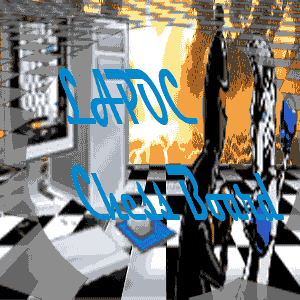| Back to Back Issues Page |
 |
|
LCB, Issue #003 -- Absorb the Building Blocks of Endgame Strategy August 01, 2011 |
Endgames for BeginnersLapoc Chess Board, Issue #003 -- Absorb the Building Blocks of Endgame Strategy learn and play online chess Great to talk to you again. Today I want to begin a journey of discovery with you. We will start out on our quest to master the great game of chess together. Our first goal over the next few months will be to learn the secrets of the endgame. Yes we will start by learning how to deliver the knockout punches. The endgame is like a game within a game. It's a seperate discipline, it's own animal. You can master the endgame even without knowing anything about the earlier phases. Later when we study those earlier stages of the game you can apply some of your endgame expertise there. We start by studying the techniques employed in the most basic endgames and we will see how more sophisticated applications of the same concepts and themes form the backbone of your strategy when playing far more complicated endgames. The most basic endgames out there are irregular endgames. These are endgames with no pawns remaining on the board. Here you need to know how to finish off a lone king with your own king and some other back row pieces. The consistent theme here is to reduce the space that the lone king has until finally he is forced over to the edge of the board where he can be mated. These endgames require a little bit of knowledge on the use of the staircase technique and the shrinking box technique. The staircase technique involves two rooks against a king or a queen and rook against a king. You place your two attacking pieces, one on a file or rank at the edge of the board, the other on the next file or rank over. Then you use these two pieces to repeatedly check the enemy king. This forces him to retreat towards the edge with every move. And with every check your pieces are closing off access to another file or rank. In the end the king is mated on the edge of the board with one rook controlling the edge file or rank that the king is standing on. His fate is sealed because the other rook controls the adjacent file or rank denying the hapless king any means of escape. The shrinking box technique is called into action when the stronger king only has one ally, a queen or rook, remaining. This means that the king must take part in the mating procedure. The attacking piece must trap the lone king by forming a box that the king cannot move out of. Then with each move the attacker will progressively shrink the box giving the lone king less and less space to move. A rook must be supported all the way by his own king because he is vulnerable to attack on the diagonal from the lone king. This is not necessary with a queen as the king can never move within striking distance. Finally when the king is forced to the edge of the board, the stronger king moves opposite his counterpart while the ally delivers the mate. The intricacies of all of these procedures are more easily absorbed by reading through the notes as you play through the moves. Remember in all of these endgames that the lone king has four ways of making a draw: Repetition: Caused by reaching the same position with same side to move on three occasions. Insufficient Material: Caused by carelessly leaving a hanging piece for the lone king to capture leaving you unable to force mate. 50 Moves Rule: Caused by inability to force mate within 50 moves of the last piece or pawn being captured. Stalemate: Caused by leaving the lone king without a square to move to but not actually in check. Make sure none of these happen to you. P.S. If you do not have html based email software and you're using a text only system, you may find that the links are only partially highlighted and may not work. If this is the case, simply copy and paste the entire link into the browser and hit Enter. That should get you where you want to go. Play through the basic endgames. Comments, ideas, feedback? I'd be stoked to hear from you. Get in touch See you next month. Ken 
|
| Back to Back Issues Page |